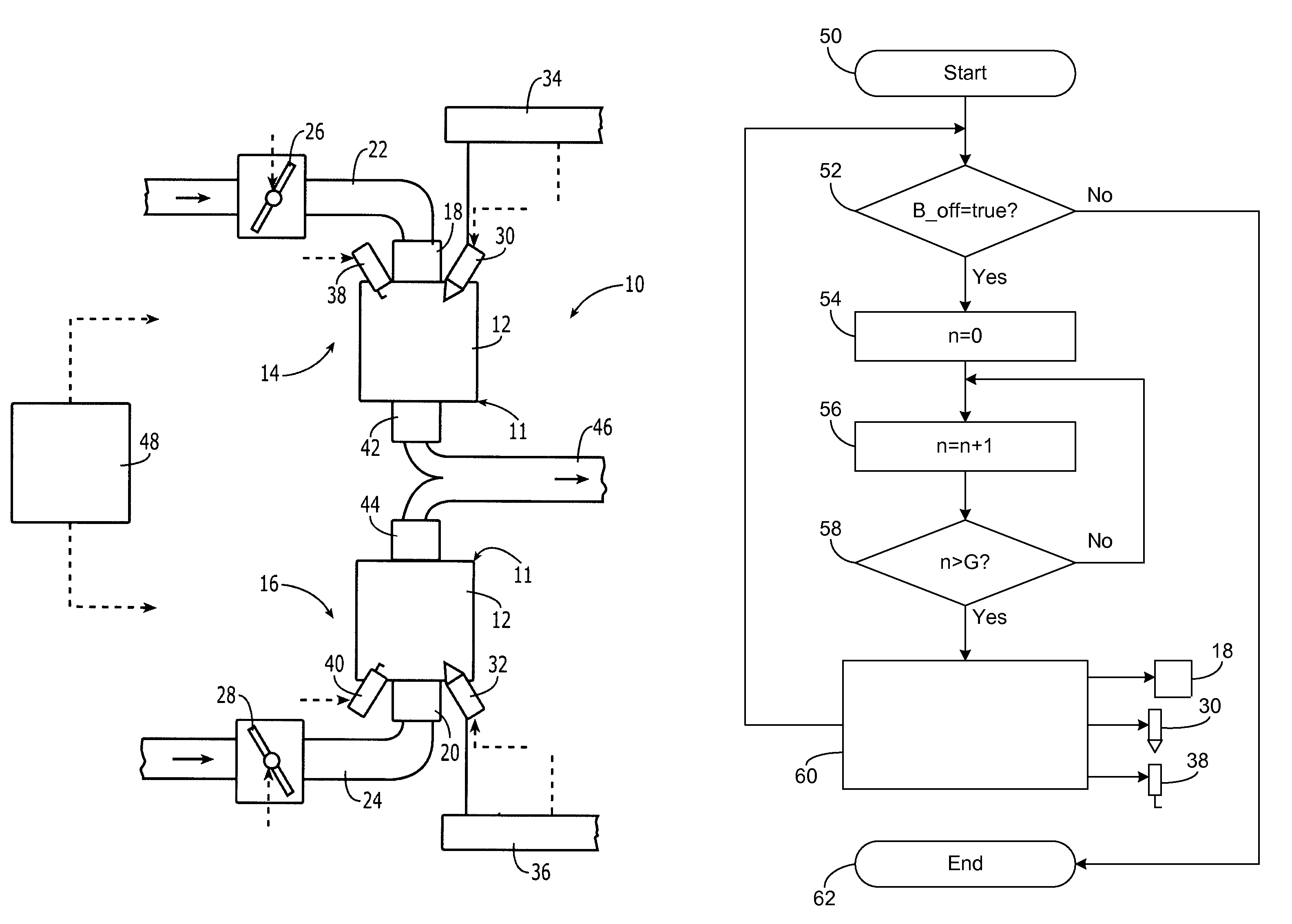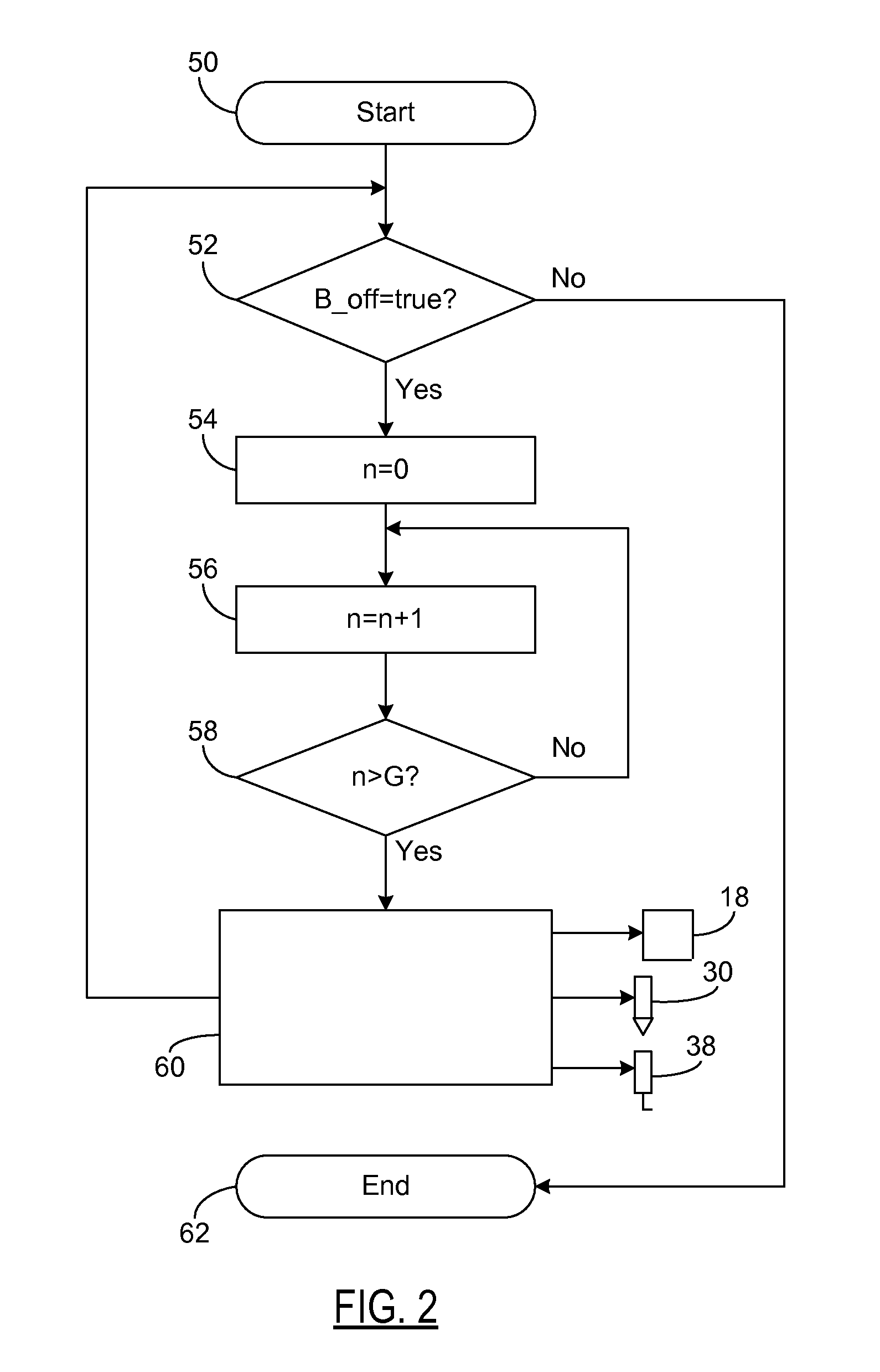Method for operating an internal combustion engine
a technology of internal combustion engine and fuel consumption, which is applied in the direction of electric control, charge feed system, fuel injection apparatus, etc., can solve the problems of low emissions and achieve favorable effect on the fuel consumption of the internal combustion engine, low emissions, and favorable fuel consumption in the internal combustion engin
- Summary
- Abstract
- Description
- Claims
- Application Information
AI Technical Summary
Benefits of technology
Problems solved by technology
Method used
Image
Examples
Embodiment Construction
[0013]An internal combustion engine carries reference numeral 10 as a whole in FIG. 1. It is used for driving a motor vehicle (not shown in FIG. 1). Internal combustion engine 10 includes multiple cylinders 11 having combustion chambers 12, of which only two are shown in FIG. 1 for the sake of simplicity. The totality of cylinders 11 is composed of a first partial set 14 of cylinders 11 and a second partial set 16 of cylinders 11. If a total of eight cylinders 11 are assumed, for example, first partial set 14 may include four cylinders 11 and second partial set 16 may also include four cylinders 11.
[0014]Combustion air reaches combustion chambers 12 in each case via an intake valve 18 or 20 and an intake manifold 22 or 24, respectively. A throttle valve 26 or 28 is situated in each intake manifold 22 or 24 belonging to a partial set 14 or 16, respectively. Fuel reaches combustion chambers 12 in each case directly via injectors 30 and 32. However, the following statements may also be...
PUM
 Login to View More
Login to View More Abstract
Description
Claims
Application Information
 Login to View More
Login to View More - R&D
- Intellectual Property
- Life Sciences
- Materials
- Tech Scout
- Unparalleled Data Quality
- Higher Quality Content
- 60% Fewer Hallucinations
Browse by: Latest US Patents, China's latest patents, Technical Efficacy Thesaurus, Application Domain, Technology Topic, Popular Technical Reports.
© 2025 PatSnap. All rights reserved.Legal|Privacy policy|Modern Slavery Act Transparency Statement|Sitemap|About US| Contact US: help@patsnap.com



